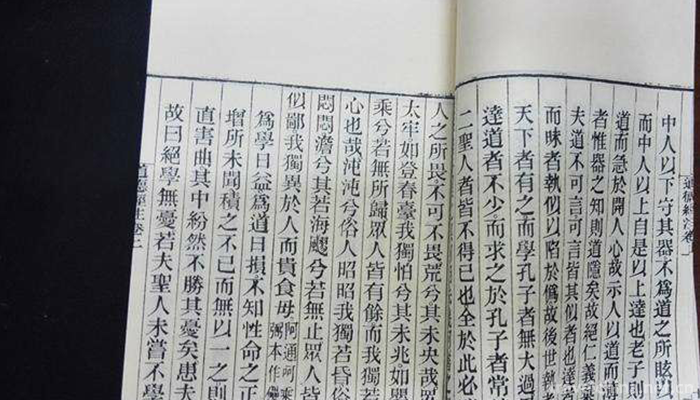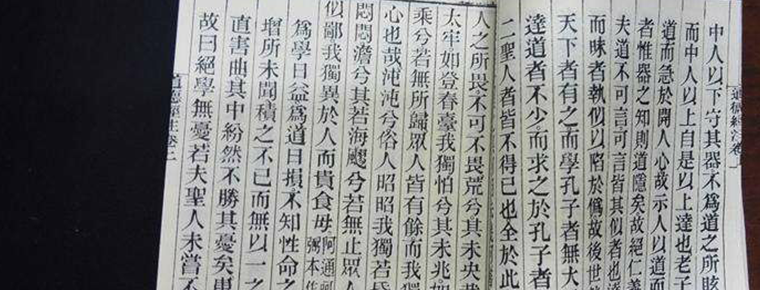Jinling Classic Carving and Printing Techniques
Jinling Classic Carving and Printing Techniques
Jinling classical engraving and printing technology, local traditional handicraft in Nanjing, Jiangsu Province, is one of the national intangible cultural heritage.
The printing technique of Jinling scriptures originated from Tang Dynasty. In 1866 (the fifth year of Tongzhi reign in Qing Dynasty), the founder of the revival of Buddhist culture in modern China, Yang Renshan, and other people of insight founded the Jinling Sutra Inscription Office to inherit the printing skills of Jinling Sutra Inscription. In the 1940s and 1950s, they survived the baptism of war. After the founding of New China, it has been inherited and protected and developed rapidly.
On May 20, 2006, Jinling engraving was approved by the State Council to be included in the first batch of national intangible cultural heritage list, project number: _-79.
historical origin
Since the Pre-Qin Dynasty, there has been a method of inscribing words and stones to print and circulate them. However, stone materials in the material transfer, carving modification, there are many inconveniences, then gradually replaced by wooden plate. So far, the art of block printing has become the mainstream of Chinese culture since Sui and Tang Dynasties. According to historical data, Chinese woodblock printing began in the 7th century AD and was used to print Buddhist scriptures. Master Xuanzang of the Tang Dynasty (600-664) used Huifeng Paper to print the image of the sage of the sages and to give it to the four people. The earliest existing block printing with chronology marks was the Diamond Sutra, which was created by Wang Pei for his parents in 868 A.D. at the London Museum in England.
From 1041 to 1048 AD, Bi Sheng (970-1051), the founder of movable type printing, one of the four great inventions in ancient China, summed up the experience of previous generations of block printing, and through repeated research and experiments, produced clay movable characters with cement as raw material. The invention of movable type printing is an epoch-making revolution in the history of printing and has made great contributions to the development of world civilization. Because of the easy breakage of clay-fired movable type, wood was used as raw material to carve movable type later. However, for various reasons, movable type printing has not been widely popularized in China, and books are still dominated by block printing.
In the mid-15th century, after the improved wooden movable type printing in Gutenberg, Germany, a chapter of modern Western printing was officially opened. At the beginning of the 19th century, western modern printing and printing ink were introduced into China at the same time. In 1843, British missionary Medus founded the Mohai Library in Shanghai, marking the formal entry of modern type printing into China. In the next few decades, Chinese traditional block printing declined sharply and was on the verge of extinction.
In 1866, the Four Classics of Pure Land, which was engraved by the dwellers of Yang Renshan, marked the founding of Jinling Classic Inscription Office and the beginning of the inheritance and use of Jinling Classic Inscription Printing Technology in Jinling Classic Inscription Office.
In 1980, the inscriptions were completely restored with a new look. In 1981, the circulation of Buddhist Scriptures was resumed, and the old engraving and printing (woodcut watermarking, line-mounted letter sets, etc.) techniques were also restored. Advanced modern printing equipment was added to meet the needs of Buddhist books donated by followers around the world. The woodcut Buddhist scriptures continued to be provided to Buddhists and intellectuals, so that the Jinling Buddhist scriptures were still published worldwide in Chinese woodcut Buddhist scriptures in the 21st century. The center is highly appreciated by Buddhist circles at home and abroad.
Process characteristics


-
1.Alice tomato noodles
The Ali brand was born in 2001 and officially launched in 2005. The brand popularity and honor of Ali Juice Noodle series products are constantly improving
Time 2018-11-26 -
2.Deng Xiaopings Hometown Tourist Area
Located in Xiexing Town, Guang'an District, Guang'an City, Sichuan Province, Guang'an City, Deng Xiaoping Hometown Tourist Area covers an area of 3.19 square kilometers
Time 2018-12-12 -
3.Shaoshan
Shaoshan City, which belongs to Hunan Province, is located in the hilly area of central Hunan Province east of central Hunan Province. Shaoshan is situated in the west of Xiangtan City
Time 2018-12-12 -
4.Park hyatt Guangzhou
In Guangzhou Park Hyatt Hotel, a traditional Lingnan culture and Gourmet Tour is opened. Guangzhou Baiyue Hotel integrates Lingnan's long history and culture with Baiyue's delicate modern
Time 2018-12-16 -
5.Xishan Scenic Spot Suzhou
Xishan is the abbreviation of Xidongting Mountain. It is 11 kilometers wide in North and south, 15 kilometers long in East and west, and 79.8 square kilometers in area.
Time 2019-02-25 -
6.Traditional medicine
Traditional medicine, a list item of intangible cultural heritage. Article 21 of the Constitution stipulates that the State shall develop medical and health undertakings, modern medicine and tradition
Time 2019-04-21 -
7.Brewing technology of soy sauce
Qian Wanlong soy sauce brewing technology is the traditional soy sauce brewing technology of Shanghai Bengang, and it is an ancient local traditional handicraft technology.
Time 2019-05-06 -
8.Cooking Skills of Confucian Cuisine
The cooking skill of Confucian cuisine, the traditional handicraft of Qufu City, Shandong Province, is one of the national intangible cultural heritages.
Time 2019-05-09 -
9.Meat rustles
"Meat Lianliang" refers to the native minority local dance variety in Lichuan City, Hubei Province, which takes the unique body performance as the main form. It is popular in the city's Duti
Time 2019-06-11 -
10.Cave Building Techniques
Cave dwelling is an ancient dwelling form of residents on the Loess Plateau in Northwest China. The history of cave dwelling can be traced back to more than 4,000 years ago. The Chinese people creativ
Time 2019-07-11 -
11.Chunqiu Temple
Chunqiu temple, also known as Chunqiu pool and Chunqiu Pavilion, is located in Yandian street, Xuyong county (Xuyong town), Luzhou City, Sichuan Province. It is mainly dedicated to Guan Sheng emperor. It is said that Guan Yu likes to read the biography of the left family in the spring and Autumn period, so it is named Chunqiu temple.
Time 2020-10-15 -
12.Sports in Panzhihua
By the end of 2018, Panzhihua had 21 stadiums (gymnasiums), 56 sports social groups at all levels, 694 national fitness routes and 263 social sports guidance stations. The city's various sports teams won 80 gold medals, 91 silver medals and 72 bronze medals in provincial competitions. 124 national fitness activities were held throughout the year, with 460000 participants.
Time 2020-12-14